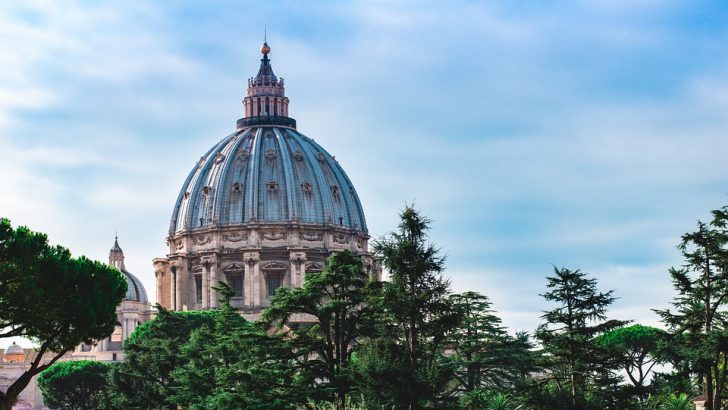Rome: A Pilgrim Guide
by Michael Rear, illustrated by Hilary Griffiths (Gracewing, £14.99)
Quite by chance the day before this book arrived on my desk I had been looking into the generally excellent Michelin Green Guide series Guide to Rome. This covers a great deal of ground, but for what I was looking for it was a disappointment.
Rome is a difficult city to write about, for the interests of visitors are so varied, ancient Rome, Imperial Rome, medieval Rome, Rome and the creation of modern Italy, Rome as the symbol of the corruption that infects so much of modern life in Italy.
This new book by Fr Michael Rear, as its title indicates, is intended specifically for the pilgrims, and they are countless every year, who see Rome in a Christian perspective. Every holiday season, such as Easter and Christmas, sees the Christian sites and monuments choked with people: one certainly needs a good guide, or one would be simply overwhelmed.
There are drawings instead of photographs, but this is reflected in the price”
Fr Rear, a retired priest of the Diocese of East Anglia, is also the author of Walsingham: Pilgrims and Pilgrimage (also published by Gracewing). Now that village, just across the water from us, is a truly interesting place.
His book on Rome is to be highly recommended. Not only does he cover all the history at exactly the right level of detail that a pilgrim needs, but he also provides a wealth of practical information of the kind I am afraid that the snazzier Rough Guides and others simply don’t bother with. He even helps you locate the bus stops.
There are drawings instead of photographs, but this is reflected in the price. The drawings also give the book a more personal atmosphere.
This book is intended for Christian pilgrims, so the details about what they might like to see are well laid out. But more than that he does not neglect the other museums and sights, with details of opening times (ever-changing and confusing he confesses).
But in catering to spiritual and cultural needs he does not neglect where to stay and where to eat – invaluable information for as strangers in any city. The reader can trust his judgement, which is more than can be said for other quick. So if you are thinking of a Roman holiday, this is a book to take with you.
One caveat: nothing beats having a good large map in a city like Rome. There are times when the sat-nav on your phone just will not do the trick. The maps in the books are indicative, but only cover small areas.
Humane man
It is to be hoped though that readers might also read some older books. I am thinking of H. V. Morton’s A Traveller in Rome, out of date in the eyes of many people, but so well written and evocative, by an observant and humane man, sensitive to religious matters.
Then there is the very personal, much civilised, but enchanting A Time in Rome by Elizabeth Bowen. These books serve to remind us that for every new book we are persuaded to read by the power of publicity, we should also read an old book too.
And the best hint of all about the city to which all roads are said to lead: never go to Rome in August.


 Peter Costello
Peter Costello
